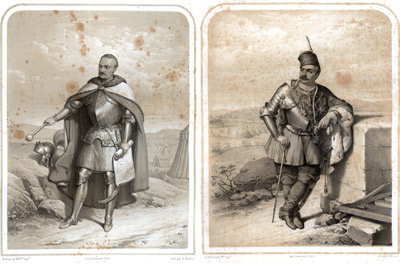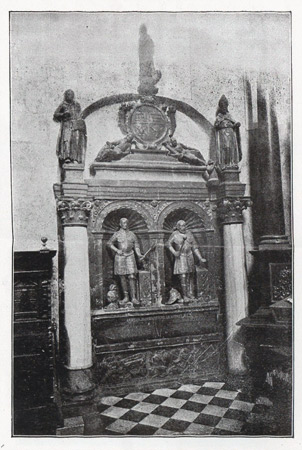The house of Żółkiewski of the Lubicz coat of arms – an outline of the family’s history.
Stefan Ciara

Jan III Sobieski, Antoine Maurin - litographies from 1851,
National Library
Zamoyski was a meagre nobleman and so was Żółkiewski, and yet they became wealthy thanks to hetmanship. – wrote Zofia Chodkiewiczowa in a letter dated 31 December 1612 to her husband Jan Karol, the Grand Hetman of Lithuania, setting before him the examples of those who knew how to turn their hetmanship into material benefits (H. Malewska, “Old Polish Letters from the Vasa epoch”). Not always, however, was the Żółkiewski family so well off.

Although they are ascribed Mazovian origin, the family nest of the Żółkiewski family is believed to be in the Zhovkva village on the Chełm land. They also possessed other estates in this region, and held local offices here and in Bełz Voivodeship, including the high position of Chamberlain, very much respected by the nobility. Their military merits were conducive to their gradual promotion. It was no different in the case of Stanisław Żółkiewski, the father of the hetman-to-be: he defended the south-eastern frontier against the Tatars, and, under the reign of Stefan Batory, took part in the war with Gdańsk, which did not want to recognise the new King. Among the closest associates to the Grand Chancellor and Grand Hetman of the Crown Jan Zamoyski, he fought at Velikiye Luki in 1580 during the war with Moscow (his two sons Mikołaj and Stanisław also took part in this expedition). He started his career as the owner of four villages; by the end of his life, this number exceeded 30. As a protégé of the Grand Chancellor, he became a member of the senate, firstly, as a minor castellan of Halych; later, after a year, he was promoted to the important Ruthenian Voivodeship. One can therefore state that already the Hetman’s father had risen to the position of a magnate, giving his offspring solid grounds to enhance this status. Stanisław (1547-1620), a royal secretary and primarily a soldier, was the one who took that chance. His military merits were noticed and appreciated at the beginning of the reign of Sigismund III as he was nominated field hetman. Two years later he joined the senate of the Polish Republic as a Castellan of Lviv, but for another senatorial office, a Voivode of Kiev (a reward for combating the army of the Sandomierz rebellion at Guzowo the year before), he waited 18 years. Sigismund III, who used to delay appointments for vacancies for years, did not pamper Żółkiewski either: it took the King 13 years to promote him to be a Royal Grand Hetman, following the death of the predecessor and protector, Jan Zamoyski! Almost at the same time Żółkiewski received the seal of the Grand Chancellor of the Crown. Such a delay of obvious nomination for a Hetman was strange especially because Żółkiewski had spent many years in camps and war marches against the Tatars, Turks, Swedes, Cossacks, and Muscovites, achieved one of the greatest victories in the history of the Polish army (Klushino, 1610), struck a deal with the Muscovite boyars, which stipulated that Prince Władysław ascended to the Czarist throne.
In all fairness, one has to admit that Żółkiewiski made a great fortune through his service to the Polish Republic. His hereditary possessions included about 200 villages (mainly on Red Ruthenia and on the east bank of the Dnieper River, the so-called left-bank Ukraine) populated by, according to the estimates, about 20 thousand subjects. In Ruthenia there were also two much more important municipal centres – Brody and Zhovkva, the latter being founded by the Hetman. What’s more, he usually let a few profitable starosties. Although he provided a lot of money for public and charitable purposes, he had considerable earnings. These, however, did not become the basis for building the power of the family in the future. The Hetman died in the fight with Turks at the borderlands of the Republic in October 1620. His only son Jan, wounded at Țuțora, although bought back from the Tatar captivity, did not live much longer than his father. The above-mentioned Mikołaj Żółkiewski was overshadowed by the brother-hetman, taking the office of Chamberlain of Lviv, whereas his son Łukasz (d. 1636) became a Voivode of Bracław.
And so, in the first half of the 17th century the Żółkiewski family of the Lubicz coat of arms faded into history. The legend surrounding the symbolic death of the family’s most prominent member – Hetman Stanisław – considerably influenced the fate and upbringing of his great-grandson Jan Sobieski.
